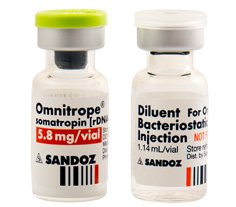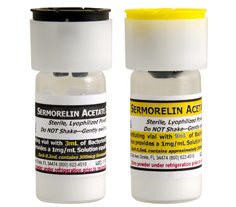Low Testosterone Levels: What Does it Mean?

Back in the early 1900’s, when life expectancy hovered around 50, people were not concerned about hormone deficiency because their lives came to an end right around the time that symptoms start to occur. Low testosterone levels today can have damaging effects on quality of life, job performance, and relationships since the majority of people can expect to live well into their eighties or beyond.
Hormonal decline occurs as a person ages. What is a low testosterone level and how is it detected in adults?
- In men, the normal range of testosterone is between 270 and 1070 ng/dL
- Women have much lower levels of testosterone, and their range is between 15 and 70 ng/dL
Most doctors today agree that symptoms associated with blood test results along the bottom end of the above spectrum may also signify a diagnosis of Low T, and in men, research has shown that when blood levels of testosterone drop below 550 ng/dL, symptoms may start to appear.
The best thing for anyone wondering what to do for low testosterone levels is to speak with an experienced hormone replacement specialist to discuss the changes that have been noticed and find out if testing is recommended at this time. Treatment with testosterone replacement therapy will not be prescribed without proper blood testing for an accurate diagnosis.
Low Testosterone Levels in Men
Decreased erectile functions and shrinking muscles are often images that are conjured up when thinking about low testosterone levels in men, but this is only the tip of the hormonal iceberg when it comes to Low T. Testosterone is also crucial for proper heart and brain functions, maintaining bone density, and ensuring an ample supply of energy throughout the day.
Men who are dealing with low levels of testosterone often feel as though they are not performing up to their best standards at work, and relate tales of decreased drive and motivation. In severe cases, careers may be placed in jeopardy when mental fatigue, memory loss, and poor productivity are involved. Depression and changes in mood and demeanor can only exacerbate the situation.
Thankfully, treatment with testosterone replacement therapy can reverse all of these concerns. Kingsberg Medical has helped many men get back on track with the way they want to live their lives, both today and well into the future.
Low Testosterone Levels in Women
Testosterone production is just as important for women as it is for men. In fact, it is this vital hormone that is responsible for a woman’s amorous feelings and desires for sex. The vaginal dryness that occurs during menopause may also be a result of low testosterone levels in women. This, in turn, can make intercourse painful and unpleasant.
The ovaries and adrenal glands are responsible for the production of testosterone in the female body. During menopause, many hormones produced here will start to decline, including testosterone, estrogen, and progesterone. Since the body naturally converts excess testosterone into a usable form of estrogen (estradiol), this treatment can serve two important purposes at once.
Low levels of testosterone can affect heart health, brain functions, job performance, sleep, weight, mood, and energy levels. Women who have received treatment with bioidentical testosterone cream often state that it feels as though a light has been turned back on inside of them.
Causes of Low Testosterone Levels
Hormone replacement specialists study declining chemical levels in the body, and what can be done to correct them. Individuals that ask what causes low testosterone levels are often surprised that there is not one straightforward answer that can be provided.
In fact, there are many causes of low testosterone that could be to blame for a diagnosis of Low T, including the following:
- Inherited conditions
- Injury to testicles or ovaries
- Testicular or ovarian cancer
- Mumps orchitis
- Treatment for cancer
- Pituitary or hypothalamus disorders or tumors
- Inflammatory diseases
- Obesity
- Certain medications
- Lifestyle habits
- Normal aging
Men often begin to see a decline in testosterone production start around the age of thirty, with a gradual decrease of about 1 to 2 percent continuing every year thereafter. This can be lessened by engaging in regular exercise, consuming a healthy diet of nutritious foods, getting proper sleep, and limiting stress. Conversely, leading an unhealthy lifestyle can increase the downward slide towards Low T.
Women do not typically find that their testosterone levels subside until they start menopause, or have had their ovaries surgically removed.
Symptoms of Low Testosterone Levels
For the most part, the symptoms of low testosterone levels are the same for men and women:
- Decreasing energy levels
- Weight gain – predominantly belly fat
- Loss of lean body mass (muscle)
- Decreased bone density
- High cholesterol
- Hair loss or thinning (head)
- Hair growth (body and face)
- Depression and mood changes
- Decreased sex drive
- Hot flashes
- Memory loss and cognitive impairment
- Mental fog and poor concentration
- Difficulty sleeping
Gender specific low testosterone levels symptoms include:
- Erectile dysfunction (men)
- Vaginal dryness (women)
- Breast growth (men)
A person who has been diagnosed with heart disease, diabetes, obesity, high cholesterol, or osteoporosis should be checked for Low T, as well.
At Kingsberg Medical, we provide confidential blood testing and consultations to men and women throughout the US. Affordable treatment options are available. Please contact us by phone or by completing the form below for a no charge consultation.
Brian Leeber




















